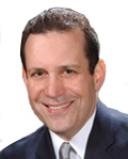Spirituality
Can Modern Men and Women Believe in Miracles?
Should Miracles be Taken Literally?
Posted January 22, 2014

As healing may occur physically, emotionally, and spiritually, a miracle may be defined and explained according to the epistemology and methodology within any of the disciplines of these spheres. Medicine, psychology, and religion independently define criteria and standards for a miracle. However, in recent years, integrative breakthroughs and collaborations have developed among disciplines for mutual understanding concerning healing miracles.
When terminal cancers disappear, many physicians recognize these events as statistical improbabilities, referring to them as spontaneous remissions, and while calling them “medical miracles,” they intend no supernatural explanation. For this group no further explanation is necessary. Other physicians may reference a miracle to mean an unexplainable and supernatural event, while still others will seek to identify a causal physical agent or interpret processes of the mind and consciousness itself as the precipitant for a so-called-miraculous healing.
Daniel Bennor, a psychiatrist and researcher, identifies twelve reasons why scientists and skeptics reject spiritual healing, prayer—and, by extension, miracles: 1) Western materialistic beliefs reject prayer-based healing based on the established scientific paradigm; 2) human nature resists change; 3) cognitive dissonance; 4) fear of “mysticism’” 5) healing occurs outside of conscious control; 6) fear of “power of the mind” control by others; 7) fear of one’s own healing powers; 8) “healers” are strange or different; 9) lack of repeatability of healing phenomena; 10) healing involves laws different from other sciences; 11) healing is often associated with religions requiring faith and belief; and 12) careers and financial security are at stake (Benor, 1993).

In modern times, however, interdisciplinary metaphysics and quantum mechanics, as well as new perspectives about faith and spirituality, give rise to the realization that the significant disciplines in medicine, psychology and religion as scientific materialism may advocate a worldview of empiricism that limits the explanatory possibilities of science. As such, empirical constructs may not fully comprehend and explain phenomena of healing and miracles. From this perspective, reality, the miraculous, as well as healing itself, can be elusive, complex, and holistic, and may remain a mystery.
Larry Dossey documents voluminous healings that occur within spiritual communities, not unlike traditional faith healings, yet under experimental conditions, concluding that research in body and mind will increase and accumulate, leading traditional scientists to feel more comfortable to embrace holistic approaches that both include and necessitate spirituality and prayer—and the miraculous. Dossey concludes that legitimizing the significance of expanding consciousness will become so apparent that death of the body will not preoccupy health workers but awareness of the psyche will no longer be an assertion of religions or accepted on blind faith alone.
A legitimate implication of rational, empirical science will recognize that immortality subsumes preoccupation of bodily death, which does not minimize the task for advances to extend and enhance physical life. Dossey’s spiritual vision predicts that the significance of these findings will lead to transformation and healing among healers and healthier rather than things that divide (Dossey, 1993). Such studies integrate medicine and spirituality, expanding understanding of healing through transformation of consciousness recognizing a profound understanding of life as inherently miraculous and mystical.
Over the past dew decades, several authors document how the immune system and mind effect healing and health, related to belief and perception. For example, Bernie Siegel describes unconditional love as the most powerful stimulant of the immune system, detailing research in documenting medical and psychological healing with faith-based practices (Siegel, 1986). Such research has been corroborated in body: mind studies through psychoneuroimmunology, understanding the impact of thoughts, faith, and belief on physical changes—where emotions and attitudes, both positive and negative, impact healing (Locke & Colligan, 1997).
Recent advances in neuroscience reveal how healing changes occur and affect enhanced functioning in the brain through meditation, mindfulness, and prayer (Segal, 2007). Since earliest recorded history, all known cultures, including all of the great world religions, have aided people to center themselves through prayer and meditation—describing miracles through prayer. Research in meditation and mindfulness explains how attunement, consciousness, and awareness stimulate and change the brain’s circuitry to enhance physical, mental, social, and spiritual wellbeing. Through meditation, mindfulness, and prayer, transformation of consciousness occurs integrating the very structures of the brain, resulting in emotional balance and enhanced immunity, in addition to multiple health benefits.

We need not look to science to affirm the significance of our spiritual reality, even more and more scientific investigations confirm the significance of spirituality for our wellbeing; deepening our awareness to our spiritual nature invites a deepening awareness to our life. Harvard theologian Richard R. Niebuhr answers the question, Can men and women today believe in miracles, in this way: “It’s not that modern man cannot believe in miracles; it’s just that he needs to be shown how!” (Niebuhr, 2004).
Benor, D. J. (1993). Quoted in Healing words by Larry Dossey. San Francisco: Harper San Francisco, pp. 201-205.
Dossey, L. (1993). Healing words. San Francisco: Harper San Francisco, pp. 205-207.
Siegel, B. (1986). Love, medicine, and miracles: Lessons learned about self-healing from a surgeon’s experience with exceptional patients. New York: Harper and Row.
Locke, S. & Colligan, D. (1997). The healer within: The new medicine of mind and body. New York: Mentor.
Segal, D. J. (2007). The mindful brain: Reflection and attunement in the cultivation of well-being. New York: W. W. Norton and Company.
Niebuhr, R. R. (2004). Experiential religion. Eugene, Oregon: Wipf & Stock Publishers.
John T. Chirban, Ph.D., Th.D. is a clinical instructor in psychology at Harvard Medical School and author of True Coming of Age: A Dynamic Process That Leads to Emotional Stability, Spiritual Growth, and Meaningful Relationships. For more information please visit www.drchirban.com, https://www.facebook.com/drchirban and https://twitter.com/drjohnchirban.




